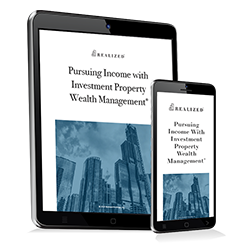
Mention “individual retirement account,” and what might come to mind is “tax-deferred contributions.” You add cash, or cash equivalents, to your individual retirement account (IRA), to build value over time. An account administrator uses those tax-deferred contributions to buy stocks, bonds, funds, or other securities. When you retire, you have access both to the original contributions, and investment returns.
Though many types of IRA plans exist, the self-directed IRA isn’t mentioned often as an option. Self-directed IRAs are similar to the typical ones; you contribute now, for future financial gain. The key here is “self-directed.” With such an account, an IRA administrator doesn’t decide where to invest contributions. You do. And, those investments can include anything from gold coins to artwork, to tangible real estate.
A self-directed IRA is set up through a custodian approved by the Internal Revenue Service (IRS). Once operative, that account is a separate legal entity. If you direct the IRA to buy a warehouse, office building, duplex or raw land, that real estate doesn’t belong to you. It belongs to your IRA. Any expenditures from the account must be approved by its custodian.
A self-directed IRA may potentially provide higher returns. Or, it could cost your entire retirement nest egg. There are pros and cons to investing through your self-directed IRA, and not all potential investments may be the best fit for an account designed for retirement savings.
The Pros
You have more control. As mentioned above, the self-directed IRA gives you complete control (with approval from your custodian) on investments. Have an eye on a just-built retail store? Interested in having a piece of the office building down the street? The self-directed IRA gives you that flexibility.
Income flow and profits are tax-deferred. The IRA, by its nature, means tax-deferred gains. Rental income from real estate ends up in the IRA. So do sale proceeds. If the IRA-owned property sells for a huge profit, that profit flows into the account – and is tax-deferred. Remember however, that investing through your IRA does not provide a safety net. Apart from the tax advantages, investment via your IRA account still carries similar risks as investments made from outside the account.
The IRA can borrow money. When you leverage the IRA’s funds to finance real estate, the lender isn’t looking at your credit history. Remember, the IRA is requesting the funds, not you. As such, the lender will look at the property’s current and proforma returns to determine loan qualification. Be aware, however, that the IRA could be responsible for paying unrelated business income tax, or UBIT, on the loan.
The Cons
You are disqualified from participating in your IRA’s property. You can contribute cash to your self-directed IRA. And, that’s about it. If you want to improve the property, you’re not allowed to put a dime toward that improvement. Nor can you put your own blood and sweat into that property. Rather, the IRA funds improvements (based on the custodian’s approval), paying a third party to repair roof shingles or install a new front door. Nor can you hire your father, or mother, or son to make repairs. Which brings us to . . .
Certain family members are disqualified from participating. According to the IRS, your ascendants (parents and grandparents), descendants (children) and spouses can’t participate in the IRA investment. In plain English, it means not only is your son prohibited from making repairs the IRA-owned office or rental house, he can’t rent it either. However, some of your family members CAN participate in that IRA investment, including siblings, cousins, aunts, and uncles.
You lose real-estate tax advantages. The tax advantages don’t disappear, but as a reminder: That property is not yours. It belongs to the IRA. So, you (personally) lose any depreciation advantages, tax deductions, or even capital loss from a sale. All those belong to the IRA.
It’s a lot of work. Self-directed IRAs require a lot of time. You need to find the right investments. You need to do your research and perform due diligence. And you have responsibility for the reporting and other administrative requirements.
Tax-efficient real estate investing isn’t limited to your IRA. The Realized Marketplace offers a variety of passive, co-investment options in real estate. These investments start as low as $25,000 and offer many of the same benefits of IRA investing, such as the ability to defer taxes and rollover proceeds (via a 1031 exchange). Investments on the Realized Marketplace provide the same income tax shelters of traditional real estate investing.
Interested in learning more about tax-efficient real estate investments? Contact the Realized team to learn more or download the Realized Fractional Investing Ebook below:



